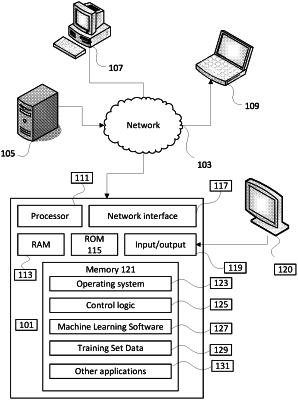| CPC G06N 5/04 (2013.01) [G06F 40/30 (2020.01); G06N 20/00 (2019.01); H04L 51/10 (2013.01)] | 20 Claims |

|
1. A first computing device comprising:
one or more processors; and
memory storing instructions that, when executed by the one or more processors, cause the first computing device to:
determine a first trained machine learning model, wherein the first trained machine learning model was trained, using first training data to modify one or more first weights of a first artificial neural network, to determine subsets comprising at least two different emojis of a plurality of emojis;
determine a second trained machine learning model, wherein the second trained machine learning model was trained, using second training data different from the first training data to modify one or more second weights of a second artificial neural network, to select emojis, from the plurality of emojis, that correspond to one or more predicted responses to one or more messages;
receive data corresponding to a message that has not yet been sent to an application executing on a second computing device;
process, using the first trained machine learning model, the message to determine one or more subsets comprising at least two different emojis of the plurality of emojis, wherein at least one of the one or more subsets corresponds to at least two different emoji types;
select, using the second trained machine learning model and based on the message, one or more second emojis from the one or more subsets of the plurality of emojis; and
transmit the one or more second emojis.
|